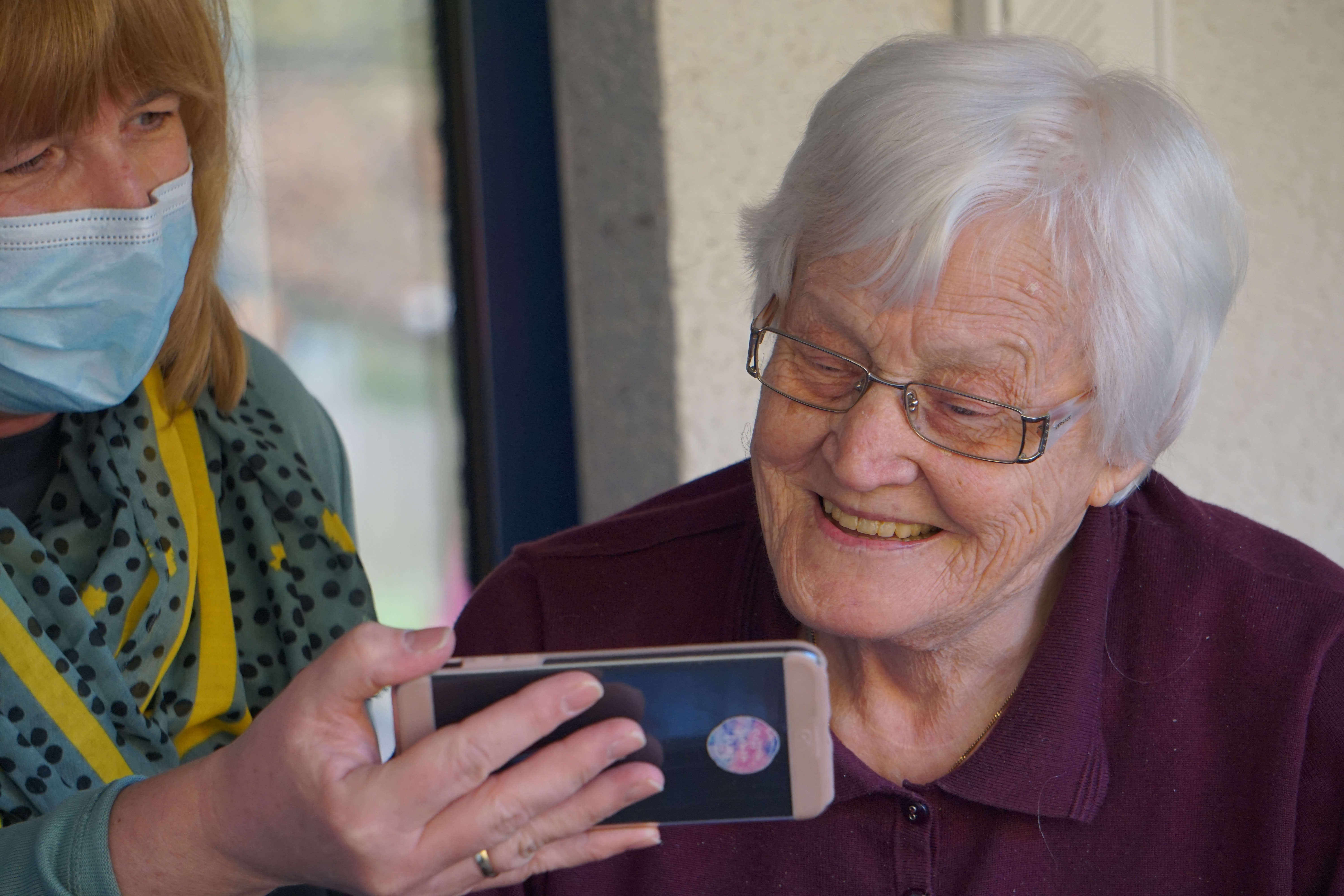
7 Warning Signs of Breast Cancer
September 20 2020
7 Warning Signs of Breast Cancer
The most common malignant tumor among women nowadays is breast cancer. In many patients, the disease evolves for a long time without visible symptoms or pain. Often, doctors find cancer in a patient only after careful examination of the breast. Many women decide to visit the specialist only by the time a lump reaches about a centimeter in diameter.
Nevertheless, the sensitive female breast may be showing signs of cancer even in early stages, and it is crucial to notice them on time. Read on to find out about seven warning signs of breast cancer that indicate the need to go through a medical check-up without delay.
Who Is at High Risk of Developing Breast Cancer?
In recent years, breast cancer statistics have changed, with the disease occurring more and more often among young patients. And although women over 50 are susceptible to it much more often, breast cancer diagnosed in patients under 30 years old is no longer surprising for specialists. It means that any woman, regardless of age, must carefully monitor the condition of her breasts.
According to research, a patient with breast cancer detected in the first stage finds a cure in 90% of cases. If the fight against the disease begins at the third stage, healing is possible only in 40% of patients. Thus, timely diagnosis and self-monitoring of signs and symptoms of breast cancer in females are vital.
Unfortunately, scientists do not yet have complete information about the causes of breast cancer. However, there is a list of risk factors that affect the likelihood of a tumor. Nevertheless, some patients may receive a diagnosis in the absence of these factors, while others remain healthy even when many of those are present. Despite that, medical specialists nowadays still associate the development of breast cancer with the following factors:
- Elderly age
- Uncontrolled use of hormonal drugs
- A history of breast cancer
- Relatives with breast cancer
- Exposure to radiation, electromagnetic fields
- Excessive weight, hypertension
- Early onset of menstruation (before the age of 12) and late menopause (after 55)
- Absence of children or late first childbirth (after 35)
- Termination of the first pregnancy
- Refusal to breastfeed
- Smoking and alcohol abuse
- Diabetes, hypothyroidism
- Lack of physical activity
- Working on a schedule with night shifts
Often at the very beginning of the disease, early symptoms of breast cancer in female patients are absent or too insignificant for a woman to pay attention to them. Thus, the appearance of the first symptoms may already indicate the active development of the disease. It is essential to be alert and never to postpone a visit to a mammologist or oncologist.
To prevent the disease or notice it on time, every woman should do the following:
- Perform self-examination during the first phase of the menstrual cycle
- Visit a gynecologist and mammologist for check-ups regularly
- Avoid abuse of hormonal emergency contraceptives
- Monitor weight and do exercise
- Get rid of bad habits (smoking, excessive alcohol consumption)
7 Early Symptoms of Breast Cancer
Women who experience discomfort in the breast at some point in life may start wondering: What are the early signs of breast cancer? How to notice the disease on time? Is nipple pain a sign of breast cancer?
A malignant tumor in the breast can provoke changes in skin cells. It leads to soreness, tenderness, and discomfort in the chest area. Although breast cancer is often painless, it is crucial not to ignore any signs or symptoms that may be caused by the condition. Some patients describe the pain as a burning sensation in the nipples or breasts.
Modern healthcare emphasizes seven warning signs of breast cancer in women that may appear in the early stages of the disease. Noticing even one of the following symptoms is a sufficient reason to seek medical attention without any delay:
- Skin change or retraction of the breast skin
- Ulceration, discoloration of the nipple or breast
- Thickening of the nipple or breast skin
- Discharge from the nipple, other than breast milk
- Nipple pain or nipple retraction
- A decrease in one of the breasts in size
- Enlarged lymph nodes in the armpit area
There is no need to panic if you have detected any changes in your chest. To avoid unnecessary stress, it is vital to keep in mind that the presence of the above symptoms can also be due to less severe conditions that are not cancerous, such as an infection or a cyst. Age-related changes, fluctuations in hormone levels, and other factors can also lead to adjustments in the breast area structure.
Stages of Breast Cancer
It is essential that the woman immediately consults a medical specialist if any changes in the breast occur. Only a specialist can assess the symptoms, examine the affected area and, if necessary, prescribe further tests.
Breast cancer develops gradually. Doctors distinguish the following stages of breast cancer:
- Stage zero – non-invasive breast cancer. It means that there are no cancer cells outside the tumor.
- The first stage is invasive breast cancer, in which cancer cells appear in the tissues adjacent to the tumor. At this stage, the lump can reach two centimeters in diameter, but it is still difficult to detect it on palpation.
- The second stage occurs when the tumor grows up to five centimeters in diameter, and cancer cells have invaded the lymph nodes surrounding the breast.
- Stage III breast cancer is divided into two subcategories: IIIA and IIIB. IIIA is an invasive kind of cancer with a tumor of more than five centimeters in diameter and a significant number of abnormal cells in the lymph nodes. Stage IIIB is a tumor of any size in the breast that has grown into the skin of the breast, internal lymph nodes, and the chest wall.
- Stage four is a tumor that has grown beyond the breast, armpit, and lymph nodes at the base of the neck, lungs, or liver.
Stages from zero to second are also known as early stages. Then, the chances of a successful cure are high. If the diagnosis appears on the third or fourth stage, the survival rate drops. It is crucial to go through regular medical check-ups and perform careful self-examination regularly to prevent the development of the disease.
Metastatic Breast Cancer Symptoms
Metastatic breast cancer is breast cancer that has spread to other parts of the body. These symptoms will vary depending on the part of the body in which the cancer has spread to.
Here are some of the symptoms you might experience if you have metastatic breast cancer by affected area of the body:
- Breast or Chest Wall: pain, nipple discharge or a lump or thickening of the breast or underarm
- Bones: pain, fractures, constipation or decreased alertness due to high calcium levels
- Lungs: shortness of breath or difficulty breathing, coughing, chest wall pain or extreme fatigue
- Liver: nausea, extreme fatigue, increased abdominal girth, swelling of the feet and hands due to fluid collection and yellowing or itchy skin
- Brain or Spinal Cord: pain, confusion, memory loss, headache, blurred or double vision, difficulty with speech, difficulty with movement, or seizures
Breast Cancer Symptoms in Men
Women are not the only ones who may develop breast cancer. For men, symptoms can be similar to those experienced by women and may include:
- Lumps in the breast, usually painless
- Thickening of the breast
- Changes to the nipple or breast skin (dimpling, puckering or redness)
- Discharge of fluid from the nipples
Breast Cancer in the Elderly Woman
The breast is a hormone-dependent organ. Throughout the woman’s lifetime, it undergoes regular hormonal attacks: during the menstrual cycle, pregnancy, lactation. Additional predisposing factors for breast cancer include contraceptive use, abortion, miscarriages, sudden weight changes, stress, and depression. Radical hormonal changes in the body accompany the onset of menopause:
- Ovarian function fades
- Adipose tissue replaces the glandular tissue of the breast
All these changes are accompanied by transmission in the structure and volume of the breast. But can a 70-year-old woman get breast cancer, or is the period after menopause a safe haven?
The truth is, the older the woman, the higher the risk of breast cancer. Women over 60 years of age receive breast cancer diagnosis 400 times more often than younger patients. The main cause of breast cancer is the oversaturation of the body with estrogens – female hormones, which occurs during menopause. That is why post-menopause is the period of the highest probability of the development of tumor diseases.
Early diagnosis, regardless of age, allows better treatment of the disease. Thus, it is crucial to be alert in cases of breast pain in elderly females. But what is there to do if the person received a diagnosis?
How to Provide Proper Care for a Patient
The need for medical care may appear completely unexpectedly due to a disease, or gradually, as the person grows older. Older adults become dependent on their loved ones, and it is essential to provide them with proper care. Caring for an elderly person is not an easy process and requires a lot of patience and time. It is vital to remember that the person needs not only physical but also psychological support.
However, with the workload and the fast pace of life, it is not always possible to be close to a beloved relative. At All American Health Care, we offer caregiving services to assist patients and their families. We help organize leisure and brighten up the everyday life of a person who often experiences a lack of communication and support.
Also, the list of our services includes the following:
- Food preparation
- Feeding the patient
- Walks, visits to medical centers
- Maintaining sanitary conditions
- Bathing, grooming
- Regular change of bed and clothing
- Informing relatives about the patient’s state
All of our caretakers are qualified professionals with years of experience. They will measure blood pressure, pulse, blood glucose levels, monitor medication intake, and deliver intramuscular or intravenous injections if needed. Our team members know how to help the patient cope with symptoms of breast cancer and ease the course of the disease even in the late stages.
Whether your loved one needs part-time assistance or round-the-clock support, All American Home Care professionals are happy to help. Contact us now for a free consultation and detailed information on our services!





